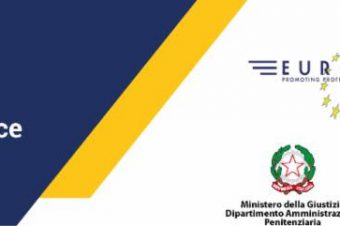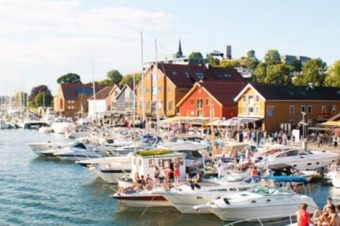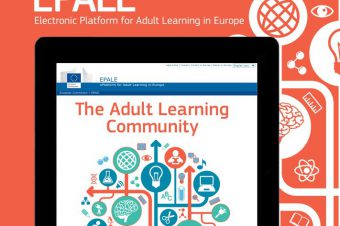2022 is an important year for European cooperation in adult learning – and Prison Education. Most of the projects awarded an EU grant in the first year of the new phase of “Erasmus+” which has just begun are starting their activities in earnest, and at the same time the last round of projects in the first 7-year phase of the programme are drawing to a close. This is also a moment when the first quarter century of EU support for Prison Education projects and mobility activities has been completed.
What better time, therefore, to take stock of how the “partnership” between the EU and Prison Education has taken shape, and how the Prison Education community can benefit from working together with colleagues in other European countries and beyond to exchange ideas, generate innovation and build new partnerships and friendships across the national borders.
EPEA Newsletter wanted to take this opportunity of focussing on these issues, with the help of Alan Smith, former head of the EU´s “Grundtvig” programme for adult learning, who played a key role in promoting EU support for Prison Education – a role which, following his retirement, led to the award of EPEA Life Membership in 2015.
Our conversations with Alan have led to a two-part interview. Following the EPEA´s video interview in the newsletter of March, in which Alan reflects in particular on how Prison Education fits into the overall picture of adult learning, the second part, in this newsletter of June, focuses on the way in which the EU’s support for Prison Education projects evolved in the years leading up to supported Erasmus+.
As regards Erasmus+ itself, Alan has produced three documents covering the whole of the first phase of the programme´s support for Prison Education projects 2014-2020 : a statistical review, a more substantive analysis (also available on request in PowerPoint format), and the most recent article (June 2022) entitled “European Cooperation and Mobility in Prison Education 2014-2020 – the contribution of Erasmus+”, which pulls out the key features of the more detailed documents. These, together with Alan´s essay “The EU and Prison Education – A Historical Review” and many more documents on the European dimension of Prison Education, can be found in the rubric “The EU and prison education” on the EPEA website:
EPEA:
Since 2014, the programme “Erasmus+” has been the EU´s main funding instrument for European cooperation in education, including Prison Education. You have been analysing the Prison Education projects in the first phase of Erasmus+ (2014-2020). The results of this work appear on the EPEA website, under the rubric “The EU and Prison Education”. However, the foundations for this support were laid long before, essentially during the time when you were responsible for adult learning at the European Commission, especially as Coordinator of the “Grundtvig” programme. What were the main ways the EU supported Prison Education during your time there?
Alan Smith:
- The first was quite clearly through the support of European projects and partnerships. With the adoption of “Grundtvig” in the year 2000 we had for the first time a significant funding instrument for adult education. But some aspects of the field, including Prison Education, had no real track record of practical transnational cooperation through European projects. At first, it was quite a challenge to inform the Prison Education community about the new opportunities. Bit by bit, however, and thanks also to the efforts of EPEA which was an enthusiastic partner in this, the news got through and by the end of the Lifelong Learning Programme in 2013, around 150 projects had been supported, over 80% of them via “Grundtvig”. Organisations from 29 of the 33 countries eligible for support were involved, and 25 of them had even been the driving force behind initiating a project. Italian organisations were the most active, but some of the smaller countries’ participation rates were even higher than their relative population size, notably Greece, Portugal and especially Norway, which figured in the “top ten” both as coordinator and participant in projects.
- The “Grundtvig” mobility activities for the further training of prison teachers, whether through structured training courses or in the form of visits and job-shadowing, also became very popular. Many participants in EPEA conferences were able to finance their attendance in this way.
- But we also went further and gave more in-depth attention to the field, for example by:
- explicitly identifying Prison Education, through the European Agenda for Adult Learning, as a priority for Member States’ policy in the Adult learning field;
- commissioning studies on Prison Education which assessed the current situation (and identified shortcomings!) in European countries and pulled together the results of research and analysis on key aspects of the field;
- organising a really major European conference “Pathways to Inclusion”, bringing together some 220 participants (policy-makers, practitioners, programme managers and people involved in European projects) from over 30 countries, underpinned by specially commissioned reports and papers and accompanied by an exciting exhibition of prison art.
- The EPEA was a valued ally in all these activities, especially as a source of insights and expertise, and I am immensely grateful to the Association – and our colleague Per Thrane in particular – for creating a space on the website as a safe haven for all the material developed at that time. Go to the rubric ´The EU and prison education´ and take a look! Most of it is still every bit as relevant today as it was then.
EPEA:
The European Social Fund is another important vehicle for channelling EU support for education and training in the prison context. Can you say something about this?
Alan Smith:
- With pleasure. During my time at the Commission, the ESF was – and still remains – a vital player in this context and we worked closely together with our colleagues from the ESF department in the Commission. In addition to the ESF funding for more locally oriented measures, which still continues today, the early years of “Grundtvig” coincided with the legendary ESF Community Initiative called “EQUAL”. In response to calls for proposals in 2001 and 2004, EQUAL funded over 120 Development Partnerships relating to various aspects of prisoner rehabilitation. Many of these had a strong education and training dimension. Some exciting and sustainable innovative models, such as the electronic platform eLiS (E-Learning im Strafvollzug) widely used in Germany and Austria today, were developed in this context.
- The results of this work were drawn together through the “Ex-Offender Community of Practice” (ExOCoP), with which we collaborated very closely, notably in the context of the “Pathways to Inclusion” conference but also later. The ExOCoP recommendations (“Berlin Declaration”) and other documents can also be found in the rubric ´The EU and prison education´ on the EPEA website.
EPEA:
And what about the many other European programmes: were any of these also relevant for Prison Education?
Alan Smith:
- To a certain extent. The programmes in education, training and social affairs which I have referred to were certainly the principal EU funding instruments for Prison Education during the period we are talking about. Nonetheless, some support was also provided for projects with direct or indirect relevance for Prison Education through other programmes, notably in the areas of Youth, Research and, logically, Justice. For example, a large-scale research project on the broader issue of access to lifelong education, had a strong Prison Education dimension.
EPEA:
Looking back, what for you are some of the key messages to emerge for Prison Education from the projects supported by the EU?
Alan Smith:
- That´s difficult, as there are so many to choose from. In my historical review of EU support on the website, I identified 15 or 20 main messages of this kind. But if I had to choose just a very few, I would maybe say something like:
- Prison systems emphasising reprisal rather than rehabilitation, are out-of-phase with democratic ideals. In other words: “People should be sent to prison as punishment, not for punishment!”
- “Prisoners have a right to education just like any other citizen.” This principle should be implemented – and not just formally acknowledged – in all countries.
- “No-one is only a prisoner”. Education and training can help to develop the prisoner’s full personality and greatly enhance his or her self-esteem.
- Consequently, we need a holistic approach to Prison Education embracing basic and general education, social and personal skills, artistic and cultural creativity as well as practical and vocational training: “Prison Education is not only about cognitive learning, and certainly not only about vocational training, important though it is.”
- In too many countries, “Prison Education is still the ‘poor relation’ compared with other aspects of the justice system.” It needs significantly higher investment – as a proportion of budgets in both education and justice.
- “Education can´t do it alone.” What we need is better integration between Education and other interventions, both inside the walls and post-release.
- And finally, “we can always learn from others”. Transnational sharing of innovation and experience, in Europe and beyond, should be intensified in both practice and policy, through sustainable partnerships and networks and improved dissemination and mainstreaming of project results.
- So there is plenty to do when one day – hopefully – Covid is behind us and some form of “new normality” in Prison Education is reached!
EPEA:
The second phase of Erasmus+ is now well under way. From your analysis of the programme so far, is there any single message you would like to share with our readers regarding the possibility of EU support for their Prison Education activities?
Alan Smith:
- Yes, my message would be: go for it! The analysis of phase 1 of the programme reveals a broad variety of Prison Education projects in terms of their size and funding, their geographical distribution, their complexity of design and level of ambition, the target groups addressed, the types of output envisaged and the aspects of Prison Education on which they focus. In other words, the message to the Prison Education community is clear: there is room in the Erasmus+ programme for projects of all kinds, and smaller organisations with limited infrastructure for managing grants and more local outreach should be no more reticent about getting involved than more powerful bodies seeking to implement more complex and large-scale reform models in the field. Both are vital, and in Erasmus+, there is truly something for everyone!




